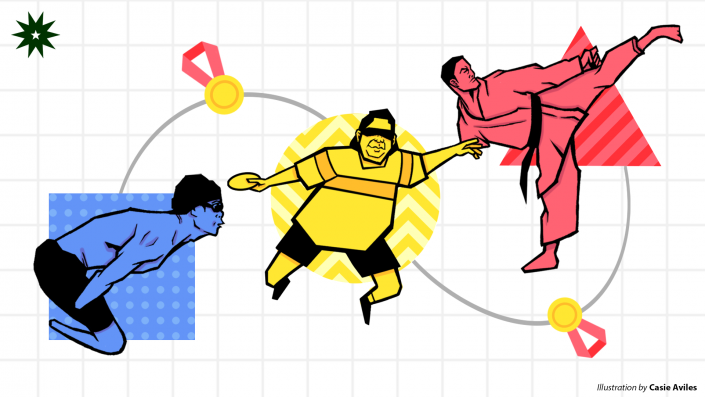It is no secret that athletes are revered in the Philippines, much like how celebrities gain fans over the course of their fame. But unlike celebrities, these well-renowned, skillful athletes need to beg to gather moral and financial support from us, Filipinos. In most cases, athletes receive much-needed, long overdue support when they are successful already—not when they are just starting. We’ve heard numerous stories similar to this, especially from Olympic gold medalist Hidilyn Diaz, Olympic skater Michael Martinez, chess grandmaster Wesley So, and most recently, EJ Obiena. It is as if these athletes did not put in enough effort and grind into their own development for them to still be overlooked.
While our able-bodied athletes continue to face these challenges in hopes of attaining recognition, there are our para athletes who also excel in their sports despite their limitations. They also train and prepare just as much to represent the country in various international meets that require unimaginable mental, emotional, and physical strength to compete against the best from different countries. These para athletes seemingly require much more blood, sweat, and tears to receive the recognition and support that they deserve. Despite these, the public and the government fail to acknowledge their endeavors.

Minding the gap
In many communities across the country, especially in highly urbanized areas such as Metro Manila, sports camps and training centers for aspiring athletes, both young and old, are made available. However, despite the increasing volume of these facilities, opportunities for para athletes are so limited that not many people know where to find one. For example, the MILO Best Center is extremely popular with children who are interested in jumpstarting or furthering their early sports journeys, but the program only covers the ever-popular basketball, volleyball, taekwondo, marathon, among others. In addition, despite their sports camps reaching areas all over the country, they only offer programs to the able-bodied. This exposes the noticeable preference in what population sports programs want to cater to. Even at a young age, para athletes are given very scarce opportunities to start their athletic careers as opportunities are really difficult to find.
With the government projects under the Build, Build, Build Program, upgrading existing sports facilities to cater to persons with disabilities (PWDs) and making them PWD-friendly facilities shouldn’t be too much to ask. If these will not benefit the para athletes now, they’ll still be of good use to future generations. Providing para athletes with more avenues to continue developing the skills needed in their athletic journey is already a big step toward acknowledging their presence in Philippine sports.
But efforts shouldn’t stop there as the extremely visible gap between the treatment of able-bodied athletes and para athletes stretches even wider. Even if a para athlete garners success in tournaments, the difference in monetary incentives the two types of athletes receive from the Philippine government is immensely disheartening. According to Republic Act No. 10699 or the National Athletes and Coaches Benefits and Incentives Act of 2015, an Olympic gold medalist will receive a P10-million incentive while a Paralympic gold medalist will only bag P5 million. Moreover, an Asian Games gold medalist will get as much as P2 million while an Asian Para Games gold medalist will only be awarded a P1-million incentive from the government. As pointed out, para athletes only get half of the amount of money that able-bodied athletes get despite preparing as much as them—if not even more due to their being PWDs.
These are just some of the factors that can affect the drive of para athletes to pursue their sport and to grab opportunities for them to grow as athletes. Some of them cannot perform at their best because of insufficient government and private support, coupled with inadequate media coverage and public regard.
Still on a chase for glory
Despite lacking recognition for their efforts, Philippine para athletes don’t stop proving that they can bring glory to the country. In fact, in the 2017 ASEAN Para Games, the Philippine delegation brought home 69 medals consisting of 20 golds, 20 silvers, and 29 bronzes. Even in the 2020 Tokyo Paralympic Games, six paralympians proudly represented the Philippines. While their success shouldn’t be grounds for media attention and government support, their feats show that para athletes are also capable of coming out on top of their competitions. They’re just as worthy to be celebrated—or revered—as individuals who serve as inspirations.
There definitely is a promising future for para athletes in the Philippines, especially if the support they deserve is felt, motivating them to continue working hard to develop their skills in their sports. Along with the observation of the International Day of PWDs last December 3, may the stories of para athletes overcoming endless challenges and persevering continuously continue to inspire the next generations. With them as role models, may the youth never stop chasing their dreams despite the hardships that they will face along the way.
